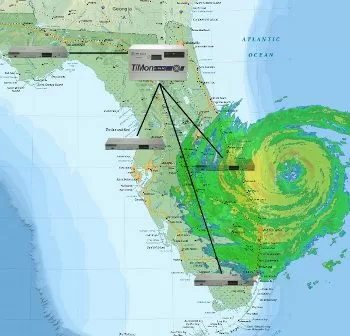Creating a Disaster Recovery Plan: 6 Ways to Get Your Network Back Online
Monitoring your network can protect you from preventable outages. But how do you protect your gear against natural disasters? The short answer is: you can't. But, with some pre-planning, you can at least limit the damage that a natural disaster will cause - and dramatically improve your recovery time. The trouble is that natural disasters are unpredictable; you never know when they will strike. The key then, is to always be prepared. Having a real disaster recovery plan is the best way to prepare.

Having network monitoring throughout your territory will tell you exactly when sites go down. It will give you visibility of your sites, even during evacuations.
Your disaster recovery plan should include:
- An analysis of disasters that could occur in your region.
- A prioritized list of the network systems that will be affected by a possible disaster. Knowing what could go wrong and working out a priority list for fixing downed equipment will help you send technicians to the right sites with the right equipment in the right order when disaster actually strikes.
- Established procedures for repairing critical systems under disaster conditions. Are your spares already databased with the appropriate information? Do you need to set jumpers on your analogs to measure current? Make sure you have a documented plan for setting up equipment quickly, and make sure that it's accessible (via IP preferably), so if something goes wrong, your people will know just what to do to get it fixed.
- An inventory of critical spare equipment and parts, so you don't have to wait for a shipment to set your network straight. If your network covers a large territory, consider employing local part depots, so your spares can get from storage to site quickly.
- Have an alternate data path for transporting alarms and information in case the primary path fails. In too many networks, the only data path for transporting network monitoring information is the network being monitored. When that network fails, you're stuck without the information you need to intelligently dispatch your technicians to get it fixed. An alternate data path ensures you can still get the information you need to fix your troubled network.
- Have a People Plan, a series of critical employee and vendor numbers handy, so if your network suffers an outage, you waste no time getting a hold of the people you need to help you get back online.
Here are a few examples of DPS clients that were prepared and managed to save themselves time, money, and equipment:
For more ways to prepare your network for natural disasters, read this full white paper Network Disaster Recovery: 16 Tips to Help Get Your Network Back Online After Disaster Strikes.

